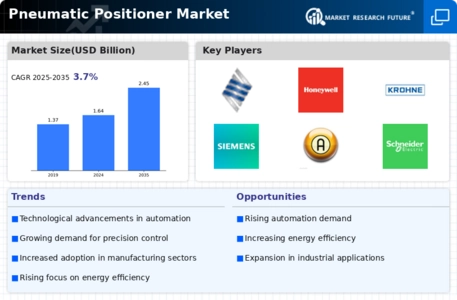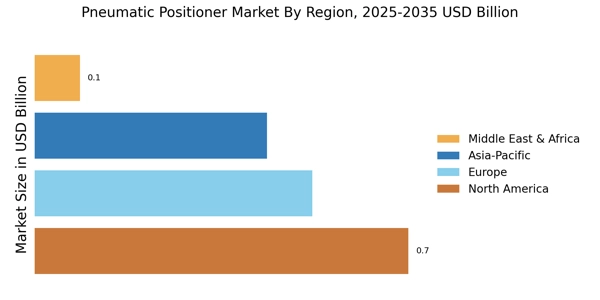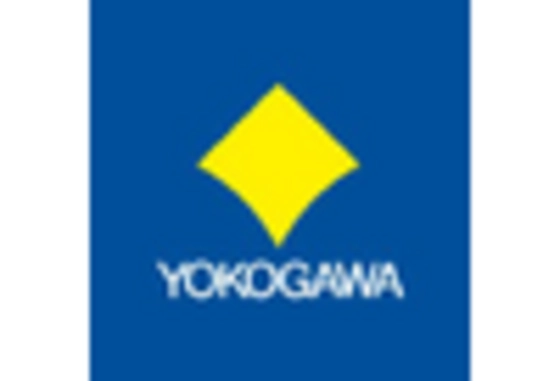Expansion of the Oil and Gas Sector
The Pneumatic Positioner Market is significantly influenced by the expansion of the oil and gas sector. As exploration and production activities increase, there is a heightened need for reliable control systems to manage complex processes. Pneumatic positioners are integral to the operation of valves in various applications, including drilling and refining. Recent statistics indicate that the oil and gas industry is expected to witness a growth rate of approximately 5% in the coming years, driven by rising energy demands. This expansion is likely to bolster the Pneumatic Positioner Market, as companies invest in advanced technologies to enhance operational efficiency and safety.
Growing Focus on Process Optimization
In the context of the Pneumatic Positioner Market, the emphasis on process optimization is becoming increasingly pronounced. Companies are seeking to streamline operations and enhance productivity, which necessitates the use of advanced control systems. Pneumatic positioners play a crucial role in achieving optimal performance by ensuring accurate valve positioning and response times. The market for process optimization technologies is expected to expand, with estimates suggesting a growth rate of around 7% annually. This growth is likely to be fueled by the need for improved efficiency and reduced operational costs, thereby creating a favorable environment for the Pneumatic Positioner Market to thrive.
Rising Demand for Automation in Industries
The Pneumatic Positioner Market is experiencing a notable surge in demand due to the increasing automation across various sectors. Industries such as oil and gas, chemical processing, and manufacturing are increasingly adopting automated systems to enhance operational efficiency and reduce human error. According to recent data, the automation market is projected to grow at a compound annual growth rate of approximately 9% over the next few years. This trend is likely to drive the demand for pneumatic positioners, which are essential for precise control of valves and actuators in automated systems. As industries strive for higher productivity and reliability, the Pneumatic Positioner Market is poised to benefit significantly from this shift towards automation.
Technological Advancements in Pneumatic Systems
Technological advancements are playing a pivotal role in shaping the Pneumatic Positioner Market. Innovations in materials, design, and control algorithms are enhancing the performance and reliability of pneumatic positioners. These advancements enable more precise control and faster response times, which are critical in various industrial applications. The market for advanced pneumatic systems is anticipated to grow at a rate of approximately 8% over the next few years. As industries seek to leverage these technological improvements to enhance their operational capabilities, the Pneumatic Positioner Market is likely to experience substantial growth driven by the adoption of next-generation pneumatic positioners.
Increasing Regulatory Standards for Safety and Efficiency
The Pneumatic Positioner Market is also shaped by the increasing regulatory standards aimed at enhancing safety and operational efficiency. Governments and regulatory bodies are implementing stringent guidelines to ensure that industrial processes adhere to safety protocols. This trend compels companies to invest in high-quality pneumatic positioners that meet these standards. The market for safety-compliant technologies is projected to grow, with estimates suggesting a rise of around 6% annually. As industries strive to comply with these regulations, the demand for reliable and efficient pneumatic positioners is likely to increase, thereby positively impacting the Pneumatic Positioner Market.


















Leave a Comment